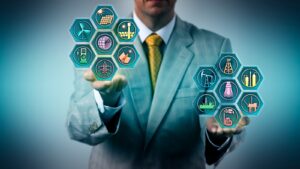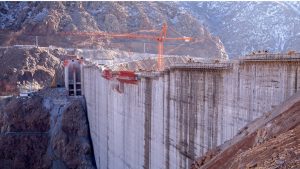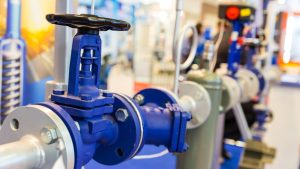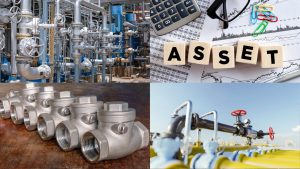A number of critical issues are currently being faced by the wastewater business in terms of technology, clients, and regulations. Our sewerage systems are under increasing pressure to handle larger and more intense flow volumes while coping with an ever-ageing network of pipes and pumping stations that need constant maintenance or replacement as our climate changes and our population grows. Technologies for treating wastewater can be improved to increase efficiency. Your wastewater assets can save energy by using cutting-edge systems, reducing their environmental effect. Systems that are quicker and more effective might save operating expenses as well.
The growing concern over the contaminating effects of harmful substances discharged by businesses on water resources has increased the need for reclamation. Diverse potentially dangerous substances that conventional treatment techniques were unable to successfully remove must be eliminated using advanced treatment technologies.
Read on to discover the modern technologies that have been introduced in the wastewater sector to overcome these problems, and optimise the efficiency of your wastewater assets.
Modern Wastewater Technologies That You Cannot Afford to Miss
The use of conventional water and wastewater treatment processes becomes increasingly challenged with the identification of more and more contaminants, rapid growth of population and industrial activities, and diminishing availability of water resources. Here are some modern technologies that will optimise the wastewater sector looked at in detail:
Membrane Filtration
Advanced water reclamation systems require membrane filtration, and new and better methods are expected to be developed in the future. A wide variety of dissolved pollutants can be removed with effective pretreatment from micro- and ultra-filtration membranes. Advanced treatment to provide water for reuse by industries makes considerable use of membrane bioreactor filtration technology. Complete biological treatment and the retention of pathogens, including viruses, are now possible with MBRs. Treatment with a membrane bioreactor results in an effluent that is highly cleared and easier to disinfect. In order to produce non-potable water, MBR treatment followed by RO and UV treatment is optimal.
Nanotechnology
The emergence of nanotechnology and the incorporation of living microorganisms in biomicroelectronic devices has revolutionised the treatment process. Nanotechnology can easily integrate with other technologies, change any existing idea, and support it. It provides a creative method for creating and utilising these processes in brand-new contexts. Concepts related to nanotechnology are being researched for membranes with higher performance, less fouling, and better hydraulic conductivity. Numerous new studies are being carried out to create membranes made of nanomaterials for the treatment of harmful chemical breakdowns. The wastewater resources will also be effectively separated from metals, bimetallic nanoparticles, mixed oxides, zeolites, carbon compounds, etc. More efficient pumping and energy-recovery systems will be possible with improved membranes and configurations.
Automatic Variable Filtration (AVF) Technology
Modern wastewater treatment techniques include Automated Variable Filtration (AVF) involves cleaning the upward flow of influent with the help of the downward flow of filter media. There is no need for extra filter media cleaning or fresh water because the filter media is cleaned by the filtered influent during the actual treatment process. Two sets of media filters that can be used in parallel or in series make up the AVF process. To provide exceptionally high-quality filtrate, a two-stage series arrangement is used. For the purpose of reusing secondary wastewater, this approach is ideal. Some of the key benefits of the system are ease of operation and maintenance, low power consumption and extremely cost-effective.
Microbial Fuel Cells
A ground-breaking innovation is the use of microbial fuel cells, which use electron transfer to harness the energy generated by microorganisms and extract electrical energy directly from organic materials found in the waste stream. A biofilm of microorganisms is developed on an electrode, and an electrical current is created when a proton exchange membrane separates the electron donor from the electron acceptor. Before it can be extensively used to generate electrical energy directly from organic matter present in wastewater, this technology is still in its development stage and major improvements in process efficiency and economics will be required.
New Urban Sanitation Technology
The New Urban Sanitation Technology combines electro flocculation (Elflox) and anaerobic digestion technologies to clean wastewater while recycling energy and minerals. Elflox treatment is based on electrocoagulation-based separation of organic pollutants from municipal wastewater (ECF reactor). Sludge (an organic substance) from the ECF reactor is sedimented in a circular sedimentation vessel. Sludge is then supplied to the anaerobic reactor where it is converted to biogas that can be used as captive energy. Due to two distinct processes called hydrolysis, which breaks down long-chain carbon molecules into smaller compounds like fatty acids, and methanogenesis, which turns fatty acids into biogas, anaerobic fermentation technology produces the most biogas. This will improve the efficiency of recycling energy and minerals whilst purifying wastewater.
Natural Treatment Systems
With the development of new techniques and technology, natural treatment systems (NTSs) are also improving, and numerous physical, chemical, and biological processes operate concurrently to altogether remove a variety of contaminants. Stormwater that would otherwise be wasted is now being captured, treated, and used as a useful source of water thanks to natural treatment technologies. The benefit of these biological systems is their capacity to eliminate a wide range of pollutants, including nutrients, viruses, and micro-constituents like endocrine-disrupting substances. The majority of the contaminants are dissolved in the CO discharge. The biological process is used to remediate other contaminants as well as phenol and ammonia residues. Trickling filters and activated sludge techniques are utilised to handle coke oven effluents most frequently.
A Way Forward is Also The Industry 4.0 Way
The sustainability of our water resources will increase as a result of these novel treatment procedures that incorporate resource recovery and the integration of urban water and waste management systems. Water abstraction from our already limited resource base can be greatly reduced by modern wastewater treatment technologies. Reclamation water management is crucial to preserving the overall treatment system’s integrity. For the process to be efficient and effective, the energy consumption in treatment plants also needs active management. Technologies to address these issues already exist, and work is underway to improve and incorporate them into systems that perform better and are more sustainable. Selecting the best option among the various possibilities and creating institutional structures to implement them in the most efficient ways present challenges. Allow your wastewater assets to reach their full potential in this industry, and adopt the most influential technology of this age.







